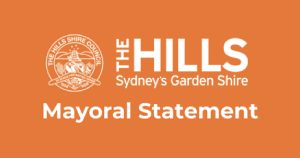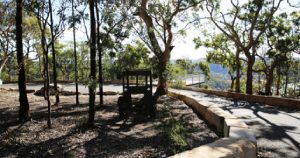
[vc_row][vc_column width=”1/6″ offset=”vc_col-lg-1/5 vc_col-md-1/5 vc_col-xs-1/5″][us_image image=”86546″ size=”thumbnail” align=”left” style=”circle” has_ratio=”1″][/vc_column][vc_column width=”1/12″ offset=”vc_col-lg-4/5 vc_col-md-4/5 vc_col-xs-4/5″][vc_column_text]By Karlene Brummer[/vc_column_text][us_post_date][/vc_column][/vc_row][vc_row][vc_column][vc_column_text]The varroa mite is a small sesame seed sized parasite that feeds on honeybees leading to malformation and weakening and eventually killing the entire colony within the hive. Until last year, Australia was free from this mite, but within the past 12 months things have changed rapidly – and for the worse.
BEE KEEPER JOHN DAVIES, OF GLENORIE SUCCINCTLY EXPLAINS THE SITUATION.
The infestation of varroa mite, an enormous threat to the honey bee industry, has been a major challenge for the NSW Department of Primary Industries, since it was detected in Newcastle on the 24th of June last year. The immediate response of the Department was to issue, two days later, a Statewide Emergency Order banning the movement of hives within a 50km radius of an infestation site. The initial discovery was in a sentinel hive at the Port of Newcastle, and an Eradication Zone (Red), 10km around that site, in which all bees would be euthanised was declared, with a further Surveillance Zone (Purple) of 25km, where all hives would be monitored and inspected. However, it was soon discovered that the infestation had already spread, through the movement of hives and queen bees, and there was a steady expansion of the zones on the map, in the Hunter Valley, north of Newcastle, and on the Central Coast. By the 16th August, there were 97 known infected premises.
The rapid spread slowed down, but the map continued to expand. On the 21st March this year I was notified that my property in Glenorie was now in the Purple Zone, and my two hives were eventually inspected, and found to be clear. However, last week, on the 6th, I was notified that there has been an infestation found in Glenorie, and I am now in the Red Zone. My hives will be destroyed and my bees euthanised. This zone now reaches south to Middle Dural, just north of Edwards Rd and west to Cattai, but most of Galston is in the Purple Zone.
The Eradication Program not only covers all managed hives of honey bees in the Red Zone, but also any feral hives as well, (but native bees are not affected.) This not only affects beekeepers, but will have a massive effect on all the trees and plants that are pollinated by the honey bee, that will be totally missing for up to three years. The government has offered recompense for the hives destroyed, but I am not aware of any help to the primary producers. – John Davies, Glenorie
More information can be found on the DPI website, https://www.dpi.nsw.gov.au/emergencies/biosecurity/current-situation/varroa-mite-emergency-response[/vc_column_text][/vc_column][/vc_row]







